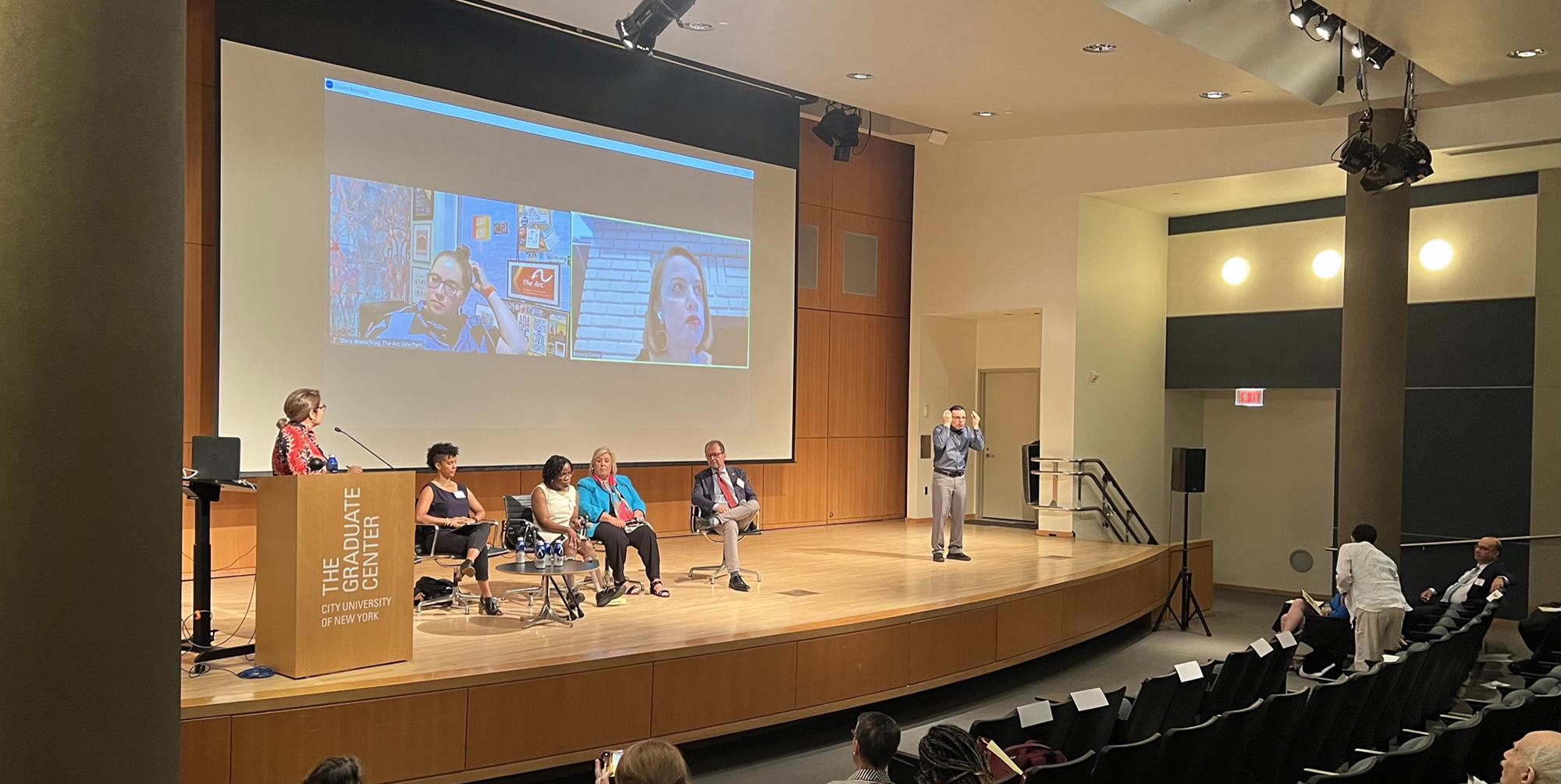AHRC New York City kicked off its 75th year of advocating for people with intellectual and developmental disabilities to lead full and equitable lives with the Michael Goldfarb Memorial Symposium, held at CUNY Graduate Center on Tuesday, July 11th. A panel of disability law experts and professionals discussed the impact of recent Supreme Court decisions on our community, such as abortion rights and affirmative action.
“There is a crisis of confidence in our US Supreme Court, ranging from ethics violations, questions of gifts to justices, to questions about the proper reliance on precedent and past cases,” said moderator Jasmine E. Harris, a professor of law at the University of Pennsylvania Law School and an expert in disability law and antidiscrimination law. “The law allows states to use disability as a legitimate basis for differential treatment. Sometimes that’s good but sometimes it’s not. We’re here today to talk about the not-so-great instances.”
Affirmative Action’s Impact on Disability Justice
The Court’s recent decision striking down affirmative action initiatives at colleges and universities will have broad impacts for multiple populations.
“When people think of affirmative action, they think, you, black person! Come in! You, white person. Go away,” said Britney Wilson, an associate professor of law at New York Law School. “That’s not what it is. It’s, can we make sure these demographic groups are on campus in some proportion to their existence in the world?”
“People’s fear of affirmative action is fear of preferential treatment,” Britney continued. “’You’re getting something different from me.’ That sounds like accommodation! People need something to effectively level the playing field. Civil rights advocates who see how hard it is to prove discrimination nowadays say we should look at the Americans with Disabilities Act. This doesn’t just apply to disabled people. This idea of accommodation is tied to what’s fair more broadly.”
The Dobbs Decision’s Impact on People with Disabilities
In Dobbs v. Jackson, the Court ruled in a 6-3 decision that the 14th Amendment provides no right to abortion access, overturning the landmark Roe v. Wade decision from 1973.
“How could Dobbs not be a disability case?” asked Natalie Chin, Associate Professor of Law at the City University of New York and Co-Director of the Disability and Aging Justice Clinic. “Over 100 years ago [in Buck v. Bell], the Supreme Court gave states carte blanche the right to control the bodily autonomy of people with disabilities and people with perceived intellectual and developmental disabilities.” Now, Professor Chin is concerned about a similar backsliding in disability rights, as “31 states and the District of Columbia say, yes, there’s a legal right to forcibly sterilize a person subject to guardianship. I’m worried the Dobbs case can lead to more states or cases saying, we need to, as a paternalist measure, make sure we don’t go down the Dobbs road.”
Rebecca Cokely, a disability rights activist who is currently the first U.S. Disability Rights Program Officer for the Ford Foundation, said “People with disabilities should be able to access abortion and reproductive rights because we are people, because we have the fundamental right to bodily autonomy. That conversation is one that, frankly, I think a lot of people in our community are not comfortable having yet. We’re never going to normalize reproductive health care and reproductive justice in the disability space if we don’t talk about what those needs are.”
Panel responder Rebecca Seawright, a New York State Assembly Member representing the Upper East Side, believes that Roe had to be protected through state constitutions. As Chair of the Assembly’s People with Disabilities Committee, she said “I think passing it here will give more momentum to having it done on the federal level.”
Looking Ahead: The Need for Intersectionality
Natalie Chin said that recognizing that a large section of the disability community lives at the intersection of oppression is critical. While the disabilities rights movement has made major strides, it was considered a largely white, hetero movement led by men with some women, she explained. “Because it was really focused on disability, it kind of forgot that disability isn’t a single issue,” Chin said. “Disability justice encompasses people with disabilities who are people of color, immigrants, LGBTQ and others whose voices have not been heard.”
Professionals and organizations like AHRC NYC must keep the focus on court decisions moving forward. “It’s our responsibility to make sure cases pertaining to disability are being covered to the same extent as other cases, and that aspects of cases related to disability, even if not disability focused, are also highlighted,” said Shira Wakschlag, Senior Director of Legal Advocacy and General Counsel, The Arc of the United States. “And it’s our job to continually educate the court, so they understand the real-life harms involved and how to remedy them to ensure the promise of our federal disability rights laws can be realized.”




